As a defeated nation, why did Germany instead quickly surpass Britain and France?
Viewpoint 1:
The fact is, peace enables development. Did Germany really have any special advantages? Then look at the GDP growth rates of Britain, France, and Germany from 1961 to the present.
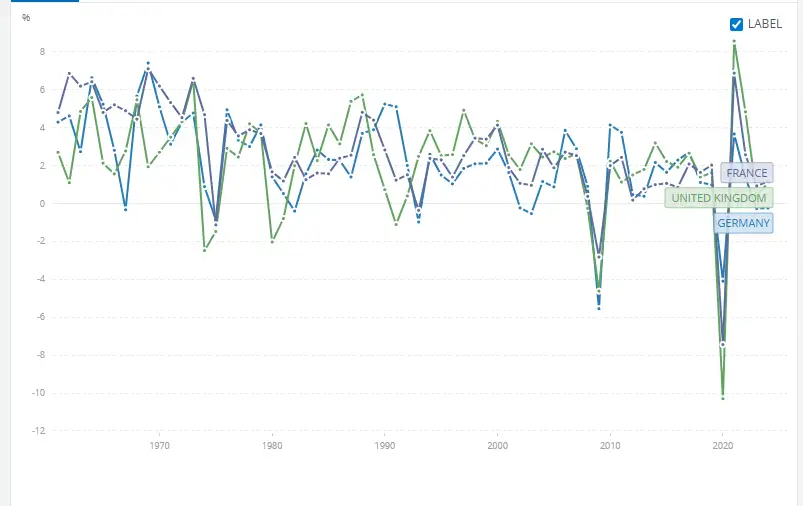
Still can not find a clue? Let’s add China.
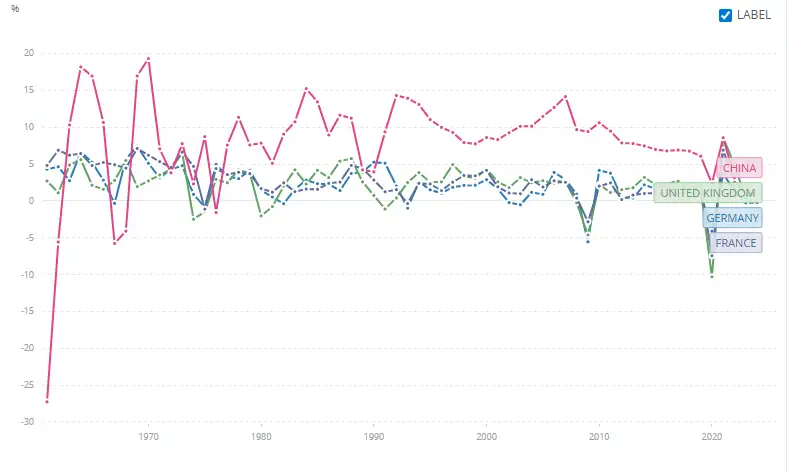
Then why did Germany develop at a breakneck pace in the 1950s, while the victorious powers Britain and France did not? You’d have to ask what France was doing in Vietnam, what France was doing in Algeria, and what Britain was doing in Malaya. Projecting national prestige abroad costs money, and suppressing colonies costs even more. Don’t just talk about Britain and France; did the US gain anything good from the Vietnam War and the Afghanistan/Iraq wars? The “Rhine Miracle” was simply the inevitable process of Germany, a genuine old-school industrial power, returning to its rightful position. The vast number of engineers prepared by the Third Reich for war were neither crippled nor extensively poached by neighboring countries; they remained within Germany and shifted to civilian applications. ZF (Zahnradfabrik Friedrichshafen), the designated transmission designer for Nazi tanks, directly entered the civilian market after the war and prospered. Continental AG, which provided rubber for Nazi tank road wheels, went into civilian tires after the war and became famous as Continental Tires. Companies like Volkswagen, Mercedes-Benz, and BMW had already produced numerous military vehicles during the war and immediately started making civilian cars after the war. Germany’s (West Germany’s) biggest dividend was the “engineer dividend.” Engineers are typical self-replicating automata; just give them some startup capital to get them going, and they can immediately build factories everywhere, producing an incredibly exaggerated growth rate. Moreover, the Rhine Miracle was by no means a unique phenomenon. Austria also had very high growth rates in those years, Japan also maintained rapid growth, and later South Korea and China emerged as industrial powers rising from genuine poverty. Modernization is a rocket fueled by engineers burning upwards; the momentum is fierce until the fuel runs out. Germany had the largest number and highest quality of engineers in Europe at the time. If you neither plunder nor suppress them, and instead go off to play “All land under heaven belongs to the king,” then of course you can only watch as the Germans are rocketed skyward by a spark from the Americans. Anglo-French enthusiasts constantly talk about the Marshall Plan rebuilding Germany, but then look: why was Germany only the third-largest recipient of aid? Why weren’t the first and second rebuilt?
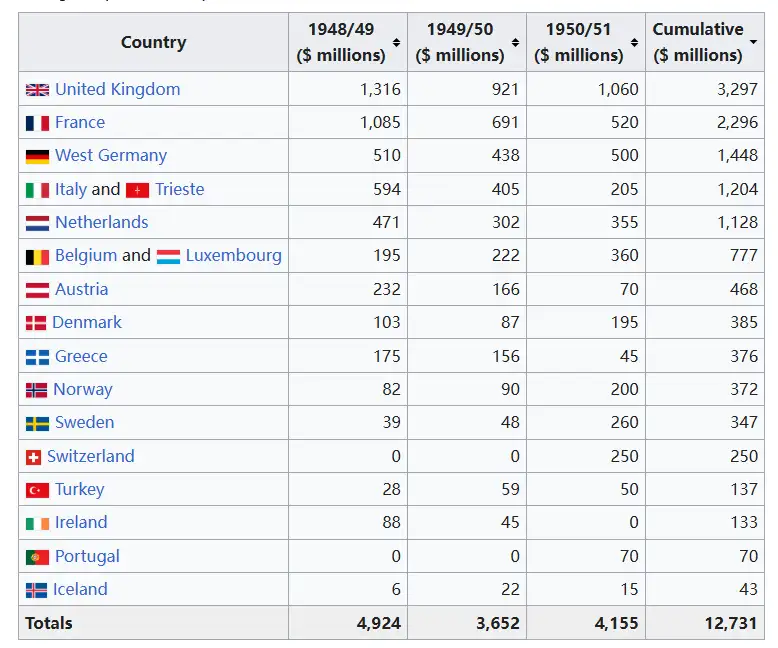
Viewpoint 2:
In May 1945, after fierce fighting, Soviet troops occupied the German capital, Berlin. As Soviet forces approached the Reich Chancellery, Hitler committed suicide, and the subsequent provisional government surrendered to the Allies. After World War II, almost the whole of Europe lay in ruins. Hitler once said that if his army could not achieve final victory, both he and the whole of Germany would sink into an endless abyss. This prophecy by the Nazi “Führer” rapidly became reality after the war. Germany, as one of the initiators of WWII, suffered devastating bombardment from the Allies. A glance around revealed scenes of utter devastation. The vast majority of able-bodied men had died in the war or were prisoners of war, leading to an extreme shortage of domestic labor. Three years of Allied strategic bombing and the Soviet Union’s tide of steel reduced almost all German cities to rubble. Large amounts of territory were ceded, and the nation itself was divided into East and West Germany, long caught in the vortex of East-West political and military confrontation.
Due to the prolonged war, post-war Germany was a landscape of broken walls and ruins. Many descriptions of German cities after the war are filled with feelings of sorrow and despair. For example, Dresden was no longer likened to the “Florence on the Elbe” but rather to the “surface of the moon.” Planning officials believed it would take “at least 70 years” to rebuild. Munich was so devastated that “people truly believed the Last Judgment was imminent.” Berlin was “shattered, leaving only piles of rubble and ruined houses.” Cologne was “tottering, its beauty marred, vanished among rubble, isolated amidst ruins.” The whole of Germany was shrouded in an atmosphere of apocalypse: economic collapse, severe shortages of goods, and people living in dire hardship. Yet, in such absolute adversity, West Germany managed to stage a remarkable comeback within just 15 years, economically surpassing Britain and France (and even the Soviet Union in the late Cold War), and revived to become Europe’s leading economic power. Why?
First: The military was largely taken over by the US, saving huge expenditures. In 1934, following the death of President Hindenburg, Hitler formally ascended to power and subsequently violated the Treaty of Versailles, leading Germany down the path of military expansion. After the Nazi Party came to power, Hitler implemented aggressive fiscal policies – including increased taxation, expanded national debt, inflation, elimination of small and medium enterprises, and expansion of monopolies – to comprehensively intervene in the national economy and promote its militarization. Stimulated by these policies, the German economy experienced a brief boom: from 1932 to 1937, national production increased by 102%, and national income doubled. The Nazis created an economic recovery miracle for Germany. As the decade-long economic decline reversed, Germany’s war machine began to operate, and its military spending increased daily. In 1938-1939, German military expenditure was 17.2 billion Reichsmarks, accounting for 54% of the national budget; by 1944-1945, it had increased 4.8 times to 99.4 billion Reichsmarks, consuming 66.5% of the national budget! Undoubtedly, military spending had become the primary expenditure of Nazi Germany, propelling Germany towards the abyss of war.
After the war, constrained by the US, Britain, France, and the Soviet Union, Germany’s military was essentially taken over by the US. It lost national sovereignty, like a lamb to the slaughter. However, setting aside these adverse effects, one obvious benefit was the saving of vast military expenditures. Post-war Germany’s GNP was less than half of its pre-war level. With military spending eliminated, it could focus entirely on economic reconstruction. West Germany also concentrated 70% of pre-war Germany’s equipment capacity and 62.4% of its industrial output value. Implementing the demilitarization of the national economy allowed it to concentrate limited manpower, material, and financial resources on economic construction, laying the foundation for the subsequent economic recovery.
Second: The US “Marshall Plan” gave the West German economy a vital shot in the arm. The Marshall Plan, also known as the European Recovery Program, was a US initiative to provide economic aid and assist in the reconstruction of war-torn European countries after WWII. It had a profound impact on the development and political landscape of European nations. Officially launched in July 1947, it lasted a full four years. During this period, West Germany and other Western European countries, through participation in the OEEC (Organization for European Economic Cooperation), received a total of $13 billion in US aid in various forms – financial, technical, and equipment – laying the foundation for West Germany’s economic development. It can be said that the transfusion of aid from the Marshall Plan provided the solid economic basis for Germany’s large-scale post-war reconstruction. Konrad Adenauer, the first Chancellor of the Federal Republic of Germany, had to admit: “Without American aid, Germany’s recovery would have been impossible.” At this point, some may ask: Why would the US support and prop up Germany, an evil Axis power? This isn’t hard to analyze, primarily for two reasons.
Firstly, to contain the Soviet Union; Germany was the bridgehead. Due to political, ideological, and cultural contradictions, the US and USSR began their Cold War standoff immediately after WWII ended, and Soviet Communist ideology began to permeate Europe. Against this backdrop, with the rise of Communism in Europe, the Soviet-led Communist bloc posed a potentially enormous threat to the US. Germany, located in the heart of Europe and on the Cold War front line, was the bridgehead against the USSR. Therefore, aiding Germany was a necessary measure for the US to contain the Soviet Union and safeguard its own security interests.
Secondly, to balance continental alliance forces. After WWII, the influence of the French Communist Party (PCF) grew rapidly; it became the largest party in parliament and participated in successive governments. The US viewed this with deep unease. Due to ideological differences and the desire to prevent France from dominating continental Europe alone, the US felt compelled to support and aid Germany, thereby enhancing its own control and influence in Europe.
Third: Germany’s intangible burden was low.
Post-war Germany lay in ruins; most military bases and factories were destroyed, and its national fortune had plummeted. One slightly comforting aspect was that while the war destroyed tangible assets, it also lightened intangible burdens, facilitating Germany’s relatively unencumbered reconstruction after WWII.
The full name of the Nazi Party was the “National Socialist German Workers’ Party” (NSDAP). This name included the words “Socialist” and “Workers’ Party,” making it appear at first glance to be a proletarian party. In reality, the Nazi Party was diametrically opposed to the German Communist Party (KPD), which advocated public ownership, and to the socialist system of the Soviet Union. It was an extreme right-wing party. In its early stages, the Nazi Party was petit-bourgeois – or rather, attempted to represent middle-class interests. Upon entering its power-seizing phase, it colluded with the German big bourgeoisie – truly a remnant of feudalism. It can be said that the rise of the Nazis relied on the support of the Junker nobility and big capitalists. After the war, the Junker nobility and big capitalists disintegrated. The original militarist economic and social foundations were destroyed, and the previous social structure was completely overturned. On this basis, a new social foundation and order were reconstructed according to a modern model, compatible with the foundations of a modern economy. The social and institutional costs were much lighter than in aged great powers like Britain and France. This also enabled Germany to quickly turn things around and return to the normal track of economic recovery.
Fourth: The tides of globalization and European integration. After WWII, the wave of the third technological revolution swept the globe, promoting unprecedented increases in productivity and rapid development of production socialization. This objectively required countries to break economic boundaries and regional limitations, expand markets, and develop large market economies. On the other hand, post-war Europe lay in ruins; the international landscape had profoundly changed. Europe was no longer the center of world politics and economics but had become the front line for the rivalry between the two newly emerged superpowers – the US and the Soviet Union. The state of poverty and weakness made European nations realize for the first time that to free Europe from its severe post-war political and economic crisis and achieve lasting peace and development, European countries must unite and form an economic and political union. Thus, the trend towards European integration became irresistible. Within this context of European integration, Germany, at the heart of Europe, actively chose to integrate into the tide of broad regional economic cooperation in Europe on its path to economic recovery and prosperity. It adapted to the trend of economic globalization and strengthened economic and trade cooperation with its neighbors. For example, to integrate into the European integration movement, Germany and France, former arch-enemies, gradually joined hands to form the European Coal and Steel Community (ECSC) of six nations. After more than 60 years of development, the European integration process deepened continuously. After absorbing more European countries, it evolved from the single-project ECSC into today’s “diverse union” encompassing politics, economics, and security (the EU). Germany, leveraging its industrial strength, gradually took the lead in EU affairs, becoming the backbone of the EU and playing an increasingly important role. The establishment of the EU played a significant role in preventing war within Europe. However, with the EU’s enlargement, many problems have emerged. On the one hand, due to differing levels of economic development, the gap between East-West and North-South within the EU is widening, facing the dilemma of a “multi-speed Europe.” On the other hand, compared to their predecessors, European elites lack confidence in European integration; Britain even proposed to “leave the EU.” Faced with numerous thorny problems, how will the EU respond? Against a backdrop of intense internal contradictions, will the EU head towards disintegration?
Viewpoint 3:
As the initiator of WWII, Germany brought profound disaster to the world’s people. Germany was ultimately defeated, its territory severely damaged by war, partitioned and occupied by Britain, France, the US, and the Soviet Union, and forced to accept territorial losses and reparations. Faced with war damage and Allied sanctions, why was Germany able to rise rapidly after WWII, once again creating a world economic miracle? Today, Mr. Mingsu will briefly analyze this for everyone: Germany was unified by Prussia. Because German unification occurred later than other Western nations, by the time it unified, the world was largely carved up. Germany’s unification and its industrial revolution occurred almost simultaneously. Inheriting Prussia’s strong militaristic character, Germany inevitably competed with other Western powers to seize commodity markets and sources of raw materials. Germany’s initiation of World War I was essentially an attempt to re-divide the world and compete for global hegemony with the older Western capitalist powers, though it ended in failure. After the war, Germany signed the Treaty of Versailles with the victorious Western powers. The defeated Germany not only had its overseas colonies partitioned but was also forced to cede territory, pay reparations, and faced severe restrictions on military development. In the late 1920s, as the capitalist world plunged into an economic crisis and the Great Depression, the German Nazi Party seized the opportunity to come to power. Combined with the harsh restrictions imposed on Germany by the Treaty of Versailles, this fueled intense German resentment and dissatisfaction. To break free from these constraints, expand its living space, and re-establish European hegemony, Germany launched World War II.
The result was Germany’s defeat and surrender. Cities suffered severe war damage; Germany was partitioned and occupied by Britain, France, the US, and the Soviet Union; it was again forced to cede territory, pay massive war reparations, and faced strict limitations on military development. Therefore, even today, the US stations over 40,000 troops in Germany, and Germany relies on the US for security protection. Due to the partition by Britain, France, the US, and the Soviet Union, the German Democratic Republic (East Germany) was established in the Soviet zone, and the Federal Republic of Germany (West Germany) in the British, French, and American zones, resulting in Germany’s long-term division. As punishment for the defeated nation, the Soviet Union dismantled and transported back to the USSR all removable machinery, equipment, rails, factory buildings, etc., from its zone, causing severe damage to East Germany’s infrastructure. In the British, French, and American zones, this level of destruction was far less. So, faced with war damage, forced territorial cession and reparations, and national division, why were Germans able to create another economic miracle after the war, leaping to become a world economic power?
First, let’s look at Germany’s geopolitical environment.
Northern Germany is the flat North German Plain. The center consists of east-west highlands forming the Central German Uplands. The southwest features the steep-walled Rhine Rift Valley. The south is the Bavarian Plateau and the Alps. The northern North German Plain, due to its cool climate and poor soil, is unsuitable for large-scale agriculture but well-suited for industrial-era machine production. The fertile southern Bavarian Plateau is suitable for both large-scale agricultural development and modern industrial layout. Overall, Germany possesses a relatively high-quality geopolitical block in Europe. Geographically, it borders Denmark to the north, the Netherlands, Belgium, Luxembourg, and France to the west, Switzerland and Austria to the south, and the Czech Republic and Poland to the east, with a territory of 357,000 square kilometers (approx. 137,800 sq miles). Germany lies at the crossroads of European land transport. Its domestic autobahn (highway) network is highly developed, and its railway network connects Eastern and Western, as well as Northern and Southern Europe. With numerous rivers, its inland waterway transport is advanced. The Port of Hamburg on the North Sea coast is Germany’s largest port.
Secondly, Germany’s solid industrial foundation and highly skilled workforce. Pre-WWII Germany had already established a relatively comprehensive industrial manufacturing system. Aircraft manufacturing, automobile manufacturing, submarine manufacturing, the steel industry, and many others were world-leading. It was precisely Germany’s powerful industrial manufacturing capability that enabled it to launch WWII. Although East Germany’s industrial base suffered severe damage after the war, West Germany was less affected. Germany’s powerful industrial manufacturing capability, of course, relied on the highly skilled technicians or industrial workers trained by its education system. Although many top-tier scientists and engineers were poached by the US and USSR after Germany’s defeat, a large pool of highly skilled technicians remained, laying a solid foundation for post-war Germany’s economic recovery, reconstruction, and economic miracle.
Thirdly, Focusing on economic construction and demilitarizing the national economy. Post-war Germany insisted on focusing on economic construction, implemented the demilitarization of the national economy, formulated economic policies suited to its national conditions, adopted regulatory policies combining government intervention with market mechanisms, and established a relatively efficient market economy mechanism. Due to demilitarization, it could concentrate limited manpower, material, and financial resources on economic construction to restore and develop productive forces.
Fourthly, US economic aid. Due to Cold War necessities, Western powers relaxed sanctions against Germany after WWII, merging the three western occupation zones into one. To counter the Soviet Union, the US provided aid to Germany and other European countries through the “Marshall Plan.” US economic aid facilitated Germany’s rapid economic recovery and development.
Fifthly, A favorable domestic and international development environment. Apart from the US, all other major participants in WWII suffered severe damage and were unable to launch new wars. The international situation was relatively stable overall under the backdrop of the US-Soviet Cold War. Although Germany initiated WWII, causing damage to itself and others, it implemented democratic reforms after the war, eliminated fascist influences, and established a relatively democratic and stable social order, providing a favorable social environment for economic development.
Sixthly, Active and effective foreign policy. Germany deeply reflected on the disasters it brought to the world by initiating WWII. It not only actively paid economic reparations to victim nations and peoples but also apologized, seeking and gaining forgiveness. Germany’s sincere approach won understanding from various countries, securing a relatively favorable development environment. In summary, although defeated in WWII, forced to cede territory, pay reparations, and endure national division, Germany deeply reflected on the war after WWII, fully utilized favorable domestic and international conditions to develop its economy, and ultimately created another economic miracle from the ruins.
Viewpoint 4:
The country was split in two: one side was the front line of capitalism, the other was the “showcase of socialism” (as Stalin put it).
The US and Soviet sides competed in rebuilding and pouring money in – how could it not turn out well? ==
Viewpoint 5:
Germany owes thanks to two people: George Kennan, the father of US Cold War containment, and our own Generalissimo Chiang Kai-shek (Jiang Jieshi).
After WWII, as the Soviet Union grew increasingly powerful in the Far East, the US government engaged in intense debate over its strategy to contain the USSR in Asia. One faction believed the US should support China as an ally. China’s massive size could contain Soviet expansion southward to acquire strategic ice-free ports, making it America’s core ally in the Far East. This group can be called the “Pro-China Faction,” its most famous proponent being US President Franklin D. Roosevelt.
On November 23, 1943, the Cairo Conference convened. Before the conference, Roosevelt specifically invited Chiang Kai-shek for closed-door consultations to discuss the post-WWII structure of East Asia. The US strategic objectives envisioned after WWII were: 1) Dismantle the global colonies of the old colonial empires like Britain and France. 2) Contain Soviet expansion. To smoothly achieve these geopolitical aims, the US viewed China as a natural ally and target for courting. Essentially, as long as China cooperated with the US in dismantling British and French empires and containing Soviet expansion southward, the US would cede the Korean Peninsula, the Ryukyu Islands (Okinawa), Indochina, and even Hong Kong to Chinese administration and aid China in securing these regions.
After meeting with Roosevelt, Chiang was presented with the first “big gift package” – the Ryukyu Islands and the Korean Peninsula. President Roosevelt proposed to Chiang: “I have thought this over repeatedly. The Ryukyu Islands are northeast of Taiwan, facing the Pacific. They are your eastern barrier, strategically extremely important. If you get Taiwan but not the Ryukyus, Taiwan will not be secure. More importantly, these islands cannot be left under the long-term occupation of aggressive Japan. Should they be placed under your jurisdiction along with Taiwan and the Penghu Islands? … Does your country want the Ryukyus?… Korea should be placed under Chinese trusteeship, for a period of 20-30 years.” Chiang mumbled for a while before answering: “These islands should be occupied by China and the US, then placed under international trusteeship and jointly managed by China and the US.” As for Korea, Chiang, Roosevelt, and Churchill ultimately stated: Korea should be granted freedom and independence at the appropriate time.
Roosevelt then presented the second “big gift package” – Indochina. Chiang also refused: “But we do not advocate that, relying on the victory of the Allies, we should recover our lost territory without the consent of the Vietnamese people, as this would give the impression of harboring aggressive ambitions… Therefore, China should strive for Vietnam’s independence. However, if the Vietnamese nation is not yet fully prepared and requires another nation to temporarily administer it, then China should not decline the responsibility. That is, the Vietnamese people would surely gladly return to the embrace of the motherland.” Roosevelt was stunned that Chiang rejected everything, citing nothing but benevolence and righteousness. The Americans realized Chiang’s strategic judgment was severely lacking; he lacked the value to be an American ally.
Thus, the US was forced to choose cooperation with the USSR to dismantle the old empires of Britain and France. But to contain the USSR, it also had to rely on British and French power. US diplomats suddenly found themselves in a paradox: dismantling Britain and France required aligning with the USSR, but containing the USSR required relying on Britain and France. To resolve this dilemma, with China explicitly refusing support, the US had no choice but to rearm Germany and Japan as bulwarks against the Soviet Union. Germany and Japan, originally slated for deindustrialization, were rebuilt because of Chiang Kai-shek’s strategic miscalculation. George F. Kennan, the “Father of Containment,” observing this changed situation, proposed that the US abandon the idea of supporting China and instead choose to support Germany and Japan as America’s core allies.
Kennan argued that although the US emerged from WWII as the world’s strongest nation, its resources were not limitless. They should be concentrated on five vital centers of manufacturing and military power: the United States, Great Britain, Central Europe (Germany), the Soviet Union, and Japan. America’s task was now to secure the four strategic points outside the Soviet Union to isolate and contain the USSR. In contrast, China was currently an agricultural nation with no industrial base. If the US supported China’s modernization, it would inevitably saddle itself with an unbearable strategic burden. If the USSR moved south to contest control of China with the US, America would be drawn into a ground war favorable to Soviet mechanized heavy forces, negating US naval and air advantages. Kennan emphasized: “Japan and the Philippines will be the cornerstone of the Pacific security system that will protect American interests in the Far East. The U.S. should cease undertaking unreasonable commitments in China and seek to restore a position of detachment and freedom of action.” US Secretary of State John Foster Dulles endorsed Kennan’s plan and developed this strategic design, displaying unprecedented toughness towards China during his tenure. This explains why the US spent vast sums on the “Marshall Plan” in Europe after WWII, while in China it only conducted the “Marshall Mission” (mediation).
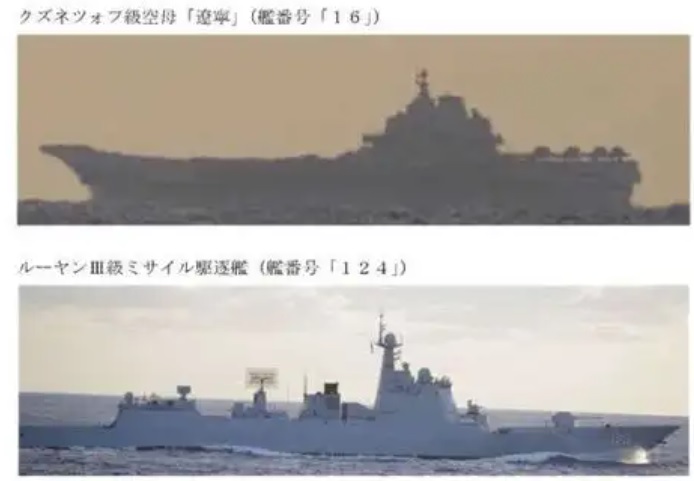
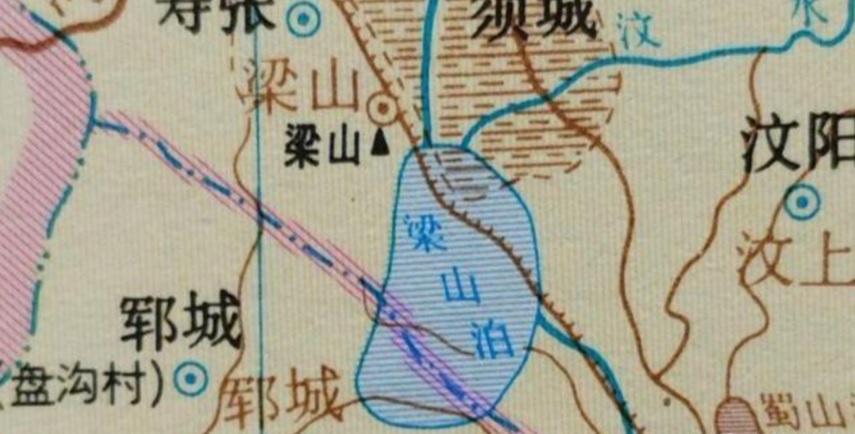
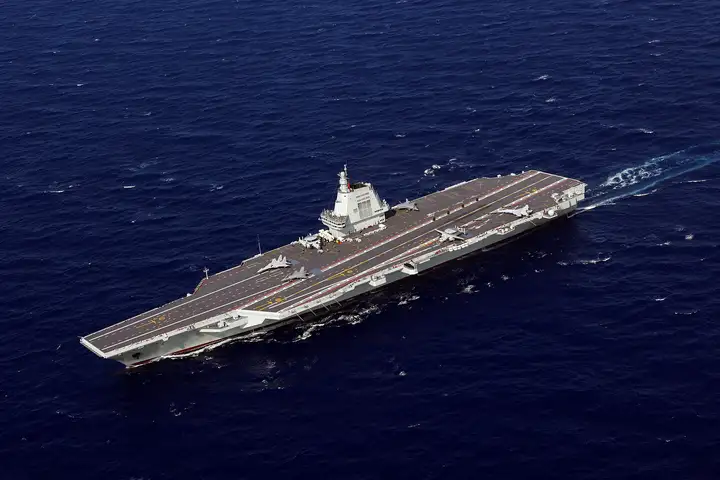
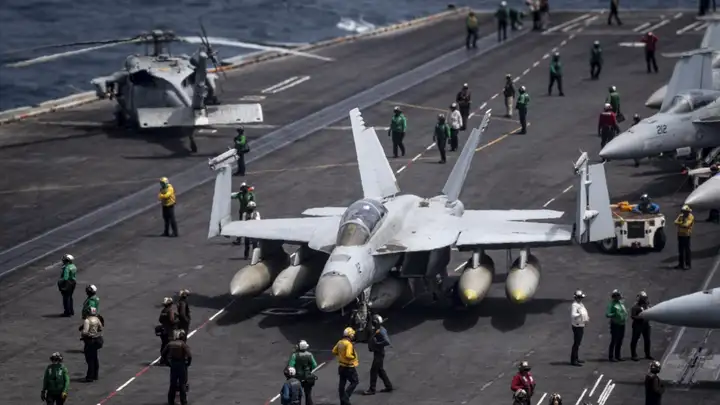
Yo, QQ88lavera is legit! Pretty decent selection and the payouts are faster than my grandma’s slow cooker. Check it out, fam: qq88lavera